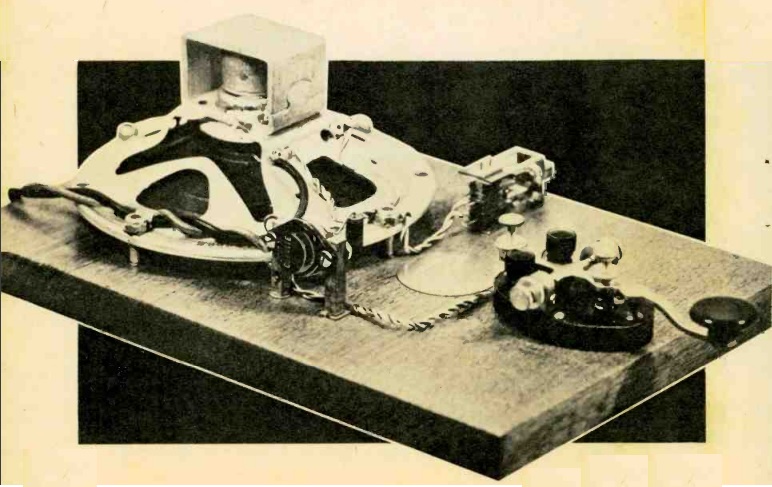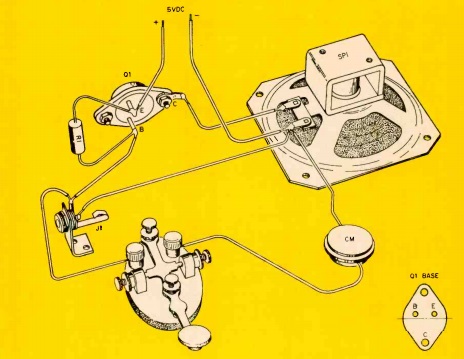 Sixty years ago, the February 1961 issue of Electronics Illustrated showed how to put together this code practice oscillator which is simplicity itself. The article notes “that old headache, acoustical feedback can be useful,” and it’s put to work by simply amplifying the output of a carbon button microphone, and placing the microphone next to the speaker.
Sixty years ago, the February 1961 issue of Electronics Illustrated showed how to put together this code practice oscillator which is simplicity itself. The article notes “that old headache, acoustical feedback can be useful,” and it’s put to work by simply amplifying the output of a carbon button microphone, and placing the microphone next to the speaker.
According to the article, the placement of the microphone is easier done than described. You basically just move it around until the pitch and volume are right. The author reports that he wound up gluing a poker chip to his to get it just right. The circuit has no volume control, but by reducing the battery voltage, the room-filling volume can be reduced.
The jack on the side is to plug in an external microphone, and use the device as a conventional amp. The article cautions to use a long enough lead in order to avoid feedback in this case, since it’s not wanted.
The choice of speaker and PNP transistors were not critical. The author reports success with a 2N34A, 2N255, 2N256, or 2N554. In this application, a heat sink was not necessary, so the semiconductor could be mounted in any convenient configuration.

